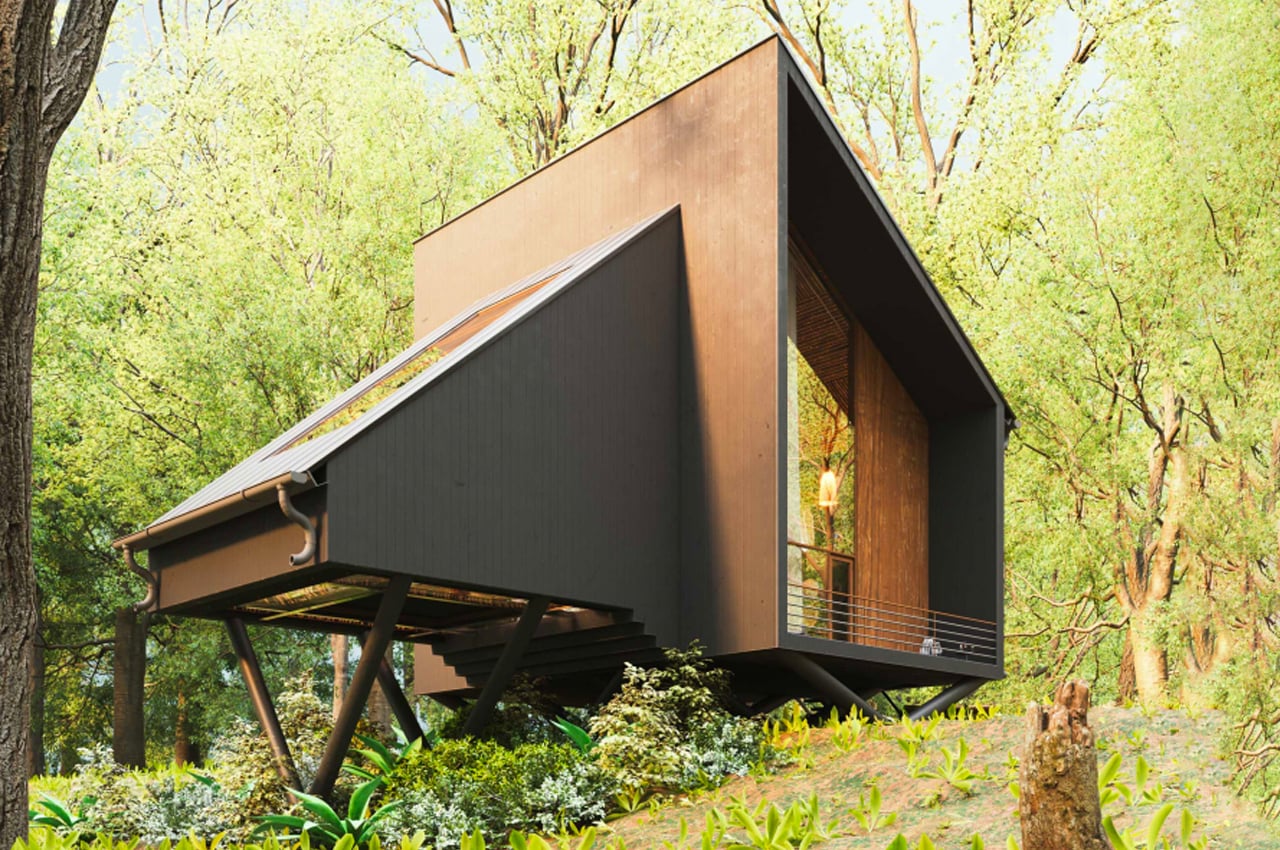
There’s something about wooden architecture that is simply so humble and endearing. Wood has been a material of choice for construction for ages galore. Wood ages beautifully – anything built with wood will retain the character of your house. And it also manages to incorporate an aura of warmth and serenity within the living space. The rustic and homely appeal of a wooden space instantly makes you feel at ease and welcomed. It’s a material of choice that has stood strong through the ages and continues to do so. Whether modern or traditional, wood can be bent and molded to create a living space of your choice and style. From a tiny timber home with a biophilic design to a treeless treehouse – this collection of homes will leave you mesmerized and completely in awe of the wonderful yet simple material that is wood!
1. The Slope House

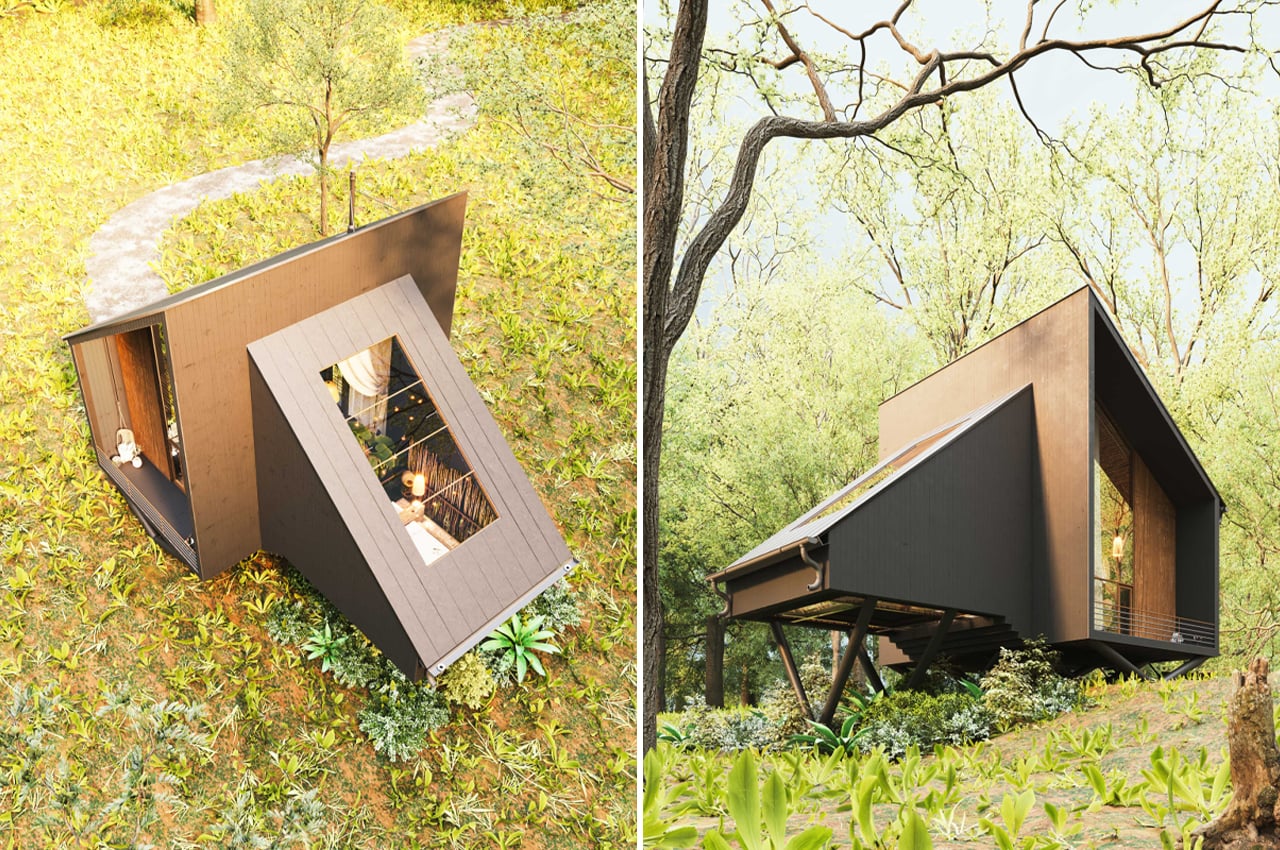
The Slope House from the 3D visualizer Milad Eshtiyaghi is an untraditional A-frame cabin that employs biophilic design inside and out. 3D visualizer and international architect Milad Eshtiyaghi has long been drawn to escapist hideaways perched on rugged, seaside cliffs and isolated cabins envisioned beneath the Northern Lights. Today, he turns his gaze to tiny cabins. A bit more quaint than treacherous, Eshtiyaghi’s latest 3D visualization finds an angular, timber cabin nestled atop an idyllic hillside somewhere in the rainforests of Brazil.
Why is it noteworthy?
Dubbed the Slope House, the timber cabin maintains a signature triangular frame that’s a thoughtful twist on the conventional A-frame cabin. Defined by two modules, one internal volume hosts the cabin’s bedroom while the other keeps the home’s main living spaces, like the dining area, kitchen, and den. The tiny cabin from Eshtiyaghi is envisioned propped atop a truss system that was specifically chosen to minimize the home’s impact on the preexisting landscape.
What we like
- A biophilic design style has been integrated into the cabin’s interior spaces
- Natural plants have been added inside the house as a small garden
What we dislike
- The theme and form of the home may be a bit too eccentric for some
2. The Climber’s Cabin
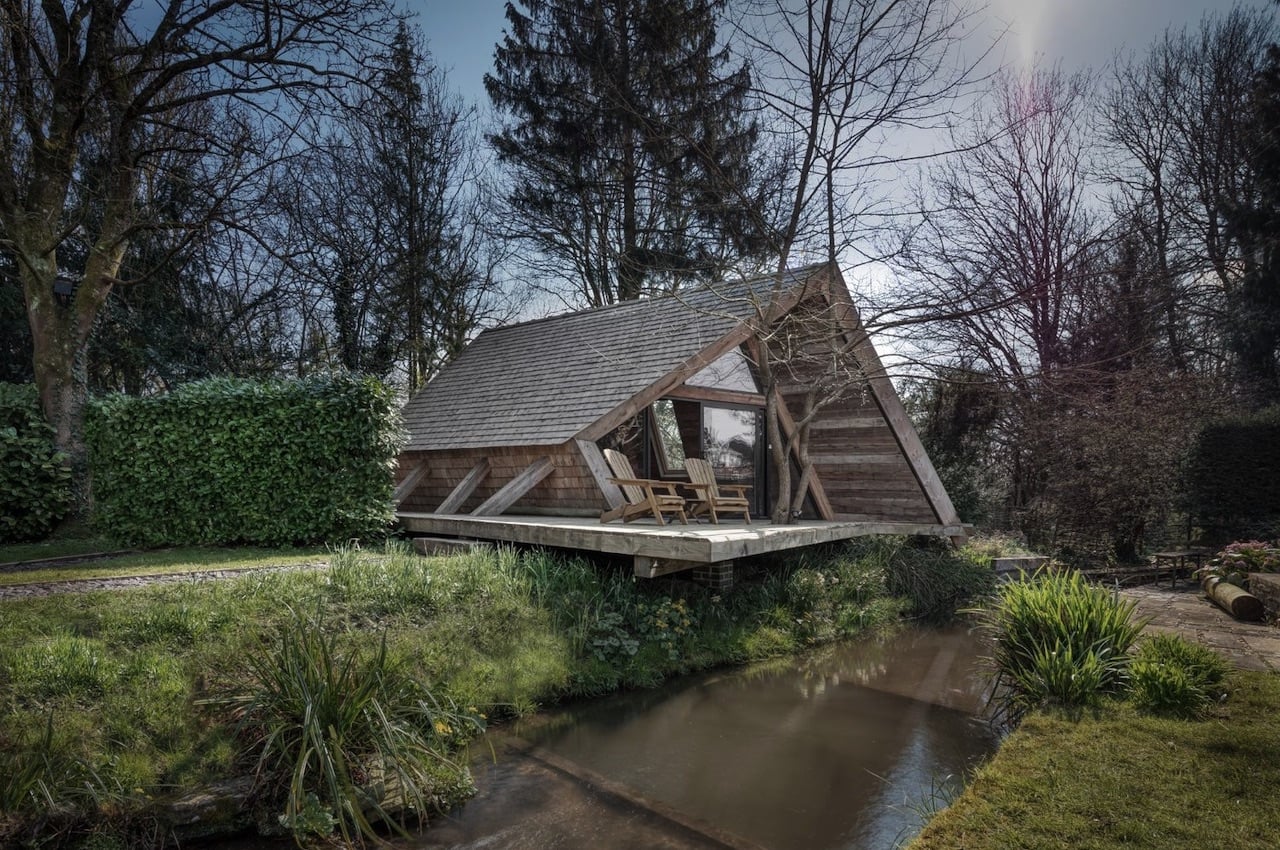
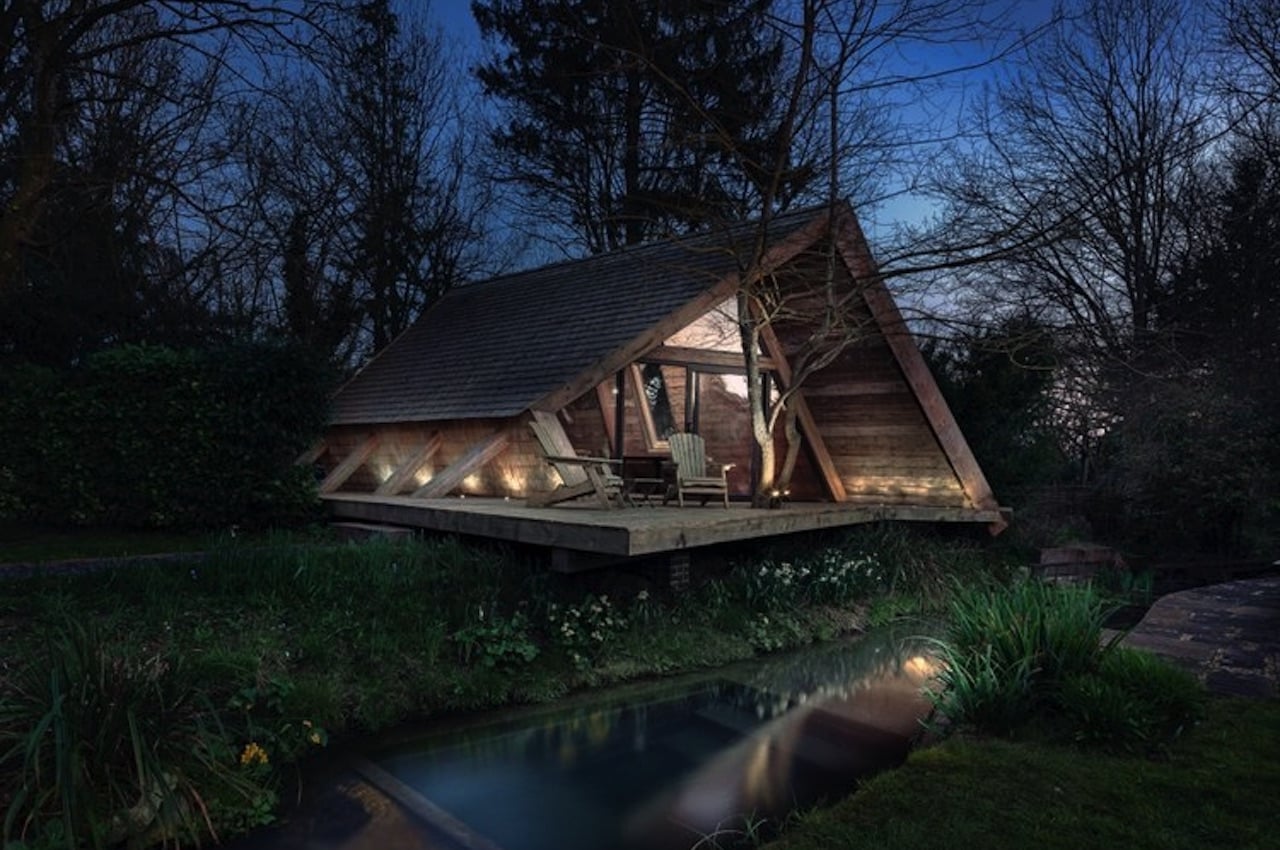
We have seen Several interesting units, but we believe more well-designed cabins will be introduced. The latest on our radar is The Climber’s Cabin by AR Design Studio. As described, its primary purpose is as a space for children and as a guest cabin for when you want to entertain friends and family.
Why is it noteworthy?
The Climber’s Cabin is situated near a stream and a woodland, adding to the adventure experience. The initial plan for the cabin was for it to function as ancillary space for the client’s house. The idea was that the cabin would be built quickly without any complex construction methods. Every step was supposed to be straightforward, so anyone could easily understand and follow. Construction should also be done using sustainable materials sourced locally. The project was actually born during those early months of lockdowns due to the pandemic.
What we like
- The A-shaped roof was optimized to allow a mezzanine
- Inside The Climber’s Cabin, interior finishes are made of used and upcycled boards
What we dislike
- No complaints!
3. Penfold
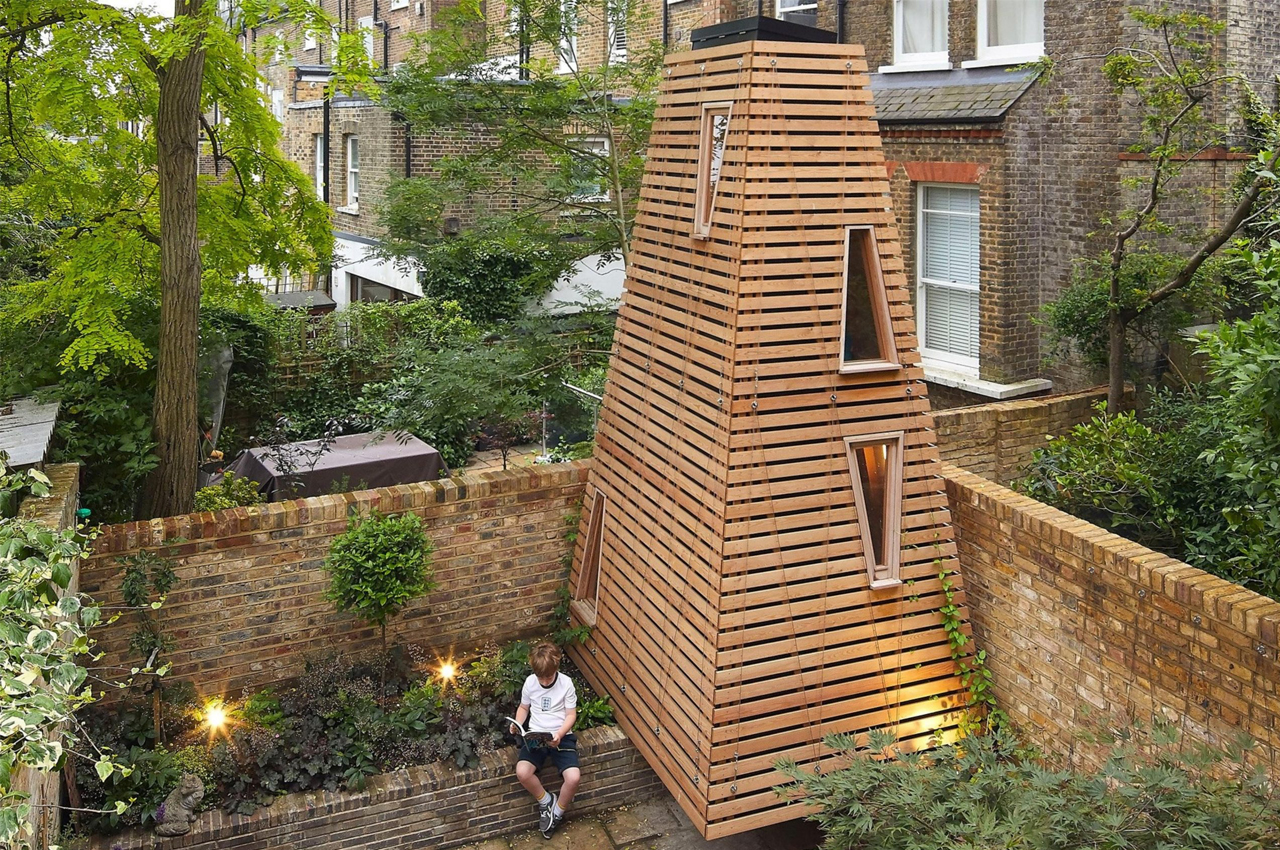
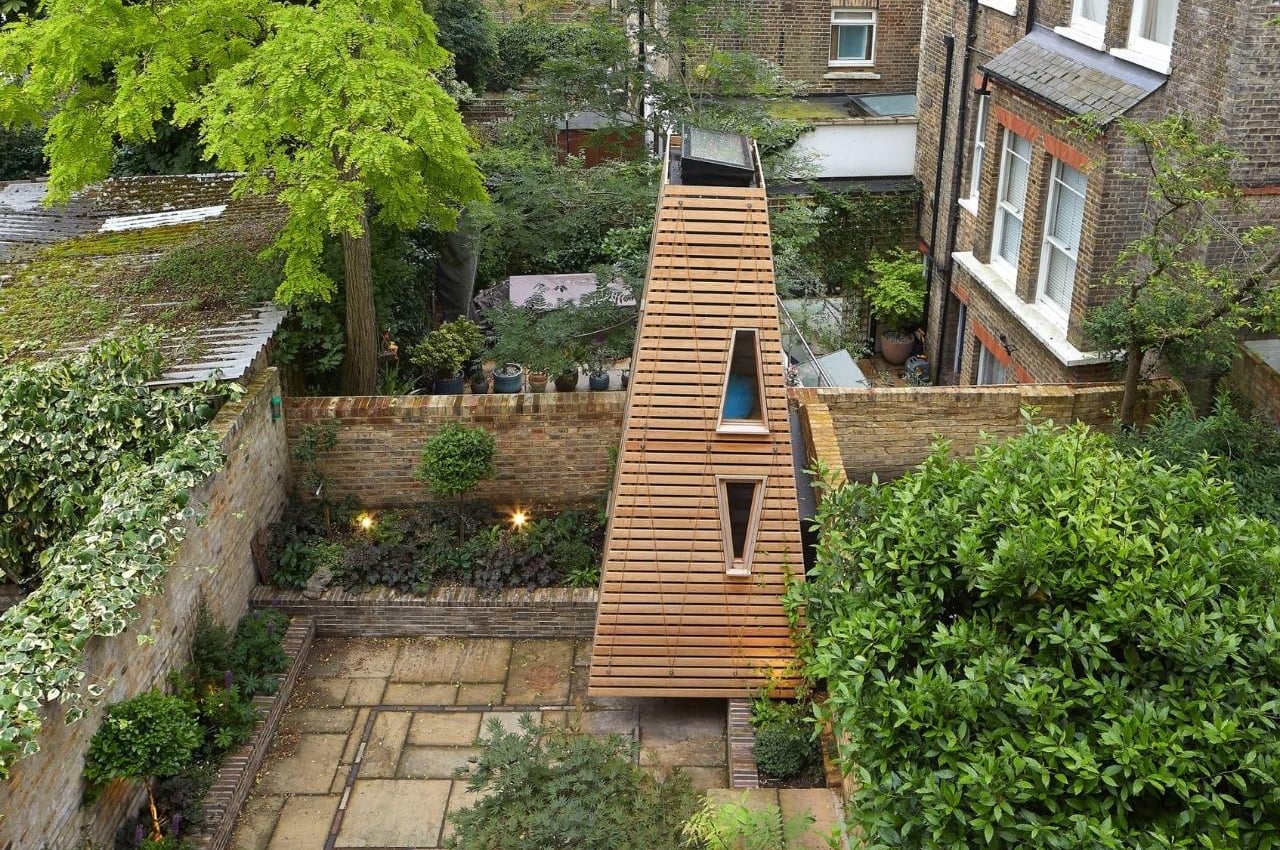
What if you wanted to have a treehouse, but there weren’t any trees around you that could accommodate one? Well, if you can hire creative designers and architects, you can have them think of things like a “treeless treehouse.” This is exactly what a family in London did, and the creative people they got created something called Penfold, a timber structure that seems strictly for kids to explore and let their imagination run wild. Oh and since this is not attached to an actual tree, it can eventually be transferred somewhere else if the owners decide to move.
Why is it noteworthy?
The brief for the project was to create a treehouse even though their home did not have a tree that can hold one. What they came up with is something that looks like a pyramid made out of timber that children can use as a lookout over the neighborhood and explore in various imaginative settings that they can think of inside their treeless treehouse. The structure is named Penfold, after a character from their favorite cartoon, Danger Mouse.
What we like
- Not attached to an actual tree, so it can eventually be transferred
- Penfold has an openable skylight at the top as its main source of light
What we dislike
- No complaints!
4. Hemmelig Room
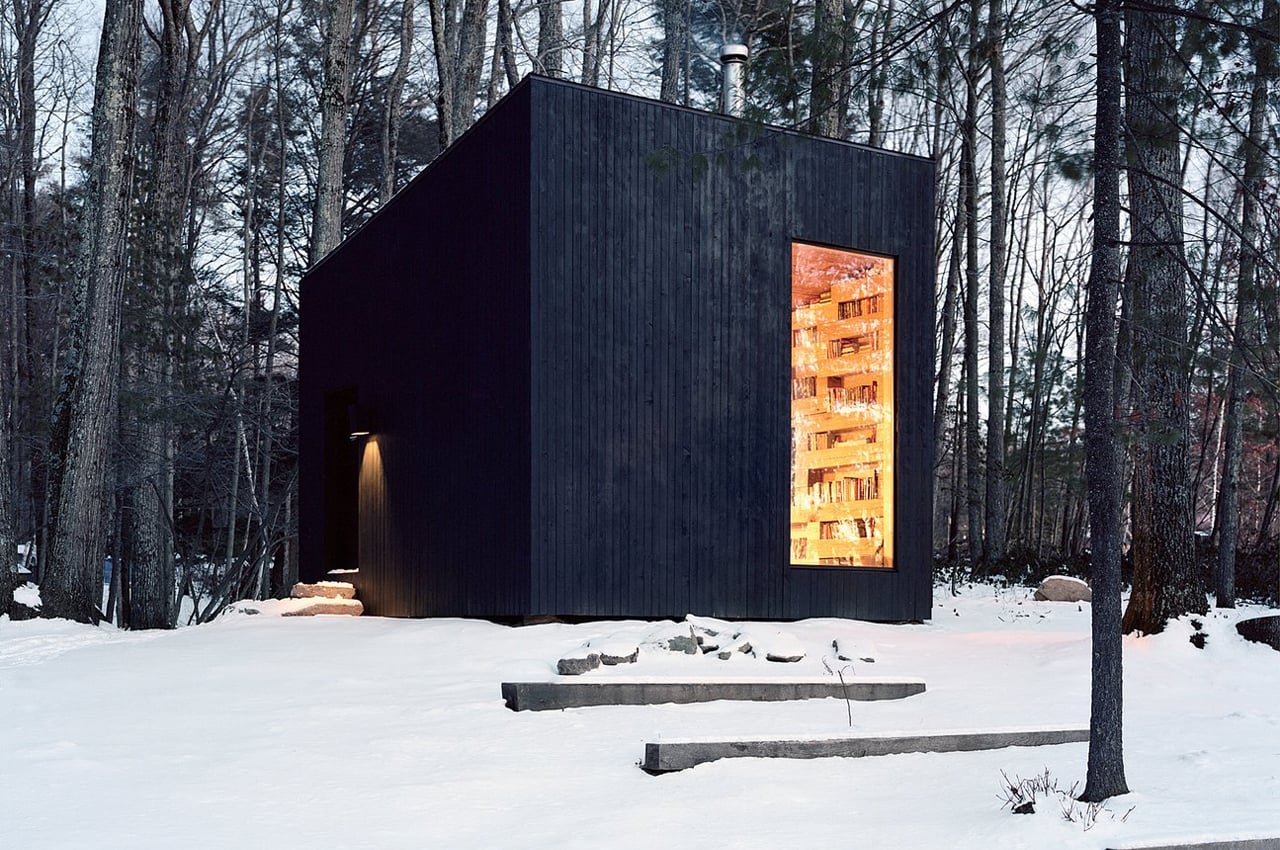
Calling the bookworm’s oasis Hemmelig Room, or ‘secret room’ in Norwegian, Studio Padron built the entire tiny cabin from disused mature oak trees that were felled during the main home’s construction. From the outside, Hemmelig Room finds a geometric structure clad in blackened timber. Following the main home’s construction process, the felled oak trees were cut into large, rectangular log sections that were left to dry over several years before building Hemmelig Room.
Why is it noteworthy?
Studio Padron designed and built a tiny cabin entirely from mature felled oak trees acquired from another home’s construction waste. As the old saying goes, “one man’s trash is another man’s treasure.” When it comes to home construction, waste produced during the building process opens the door for more opportunities. While many home builders and architects plan homes around the site’s preexisting trees and landscape, sometimes felling trees can’t be avoided. After finishing work on a new home, Studio Padron, a US-based architecture firm, utilized the felled trees collected during the home’s construction and built a tiny black cabin to function as the home’s standalone library.
What we like
- Built from felled oak trees
- Nonuniform timber panels merge with cavities to create bookshelves
What we dislike
- No complaints!
5. The Water Cabin
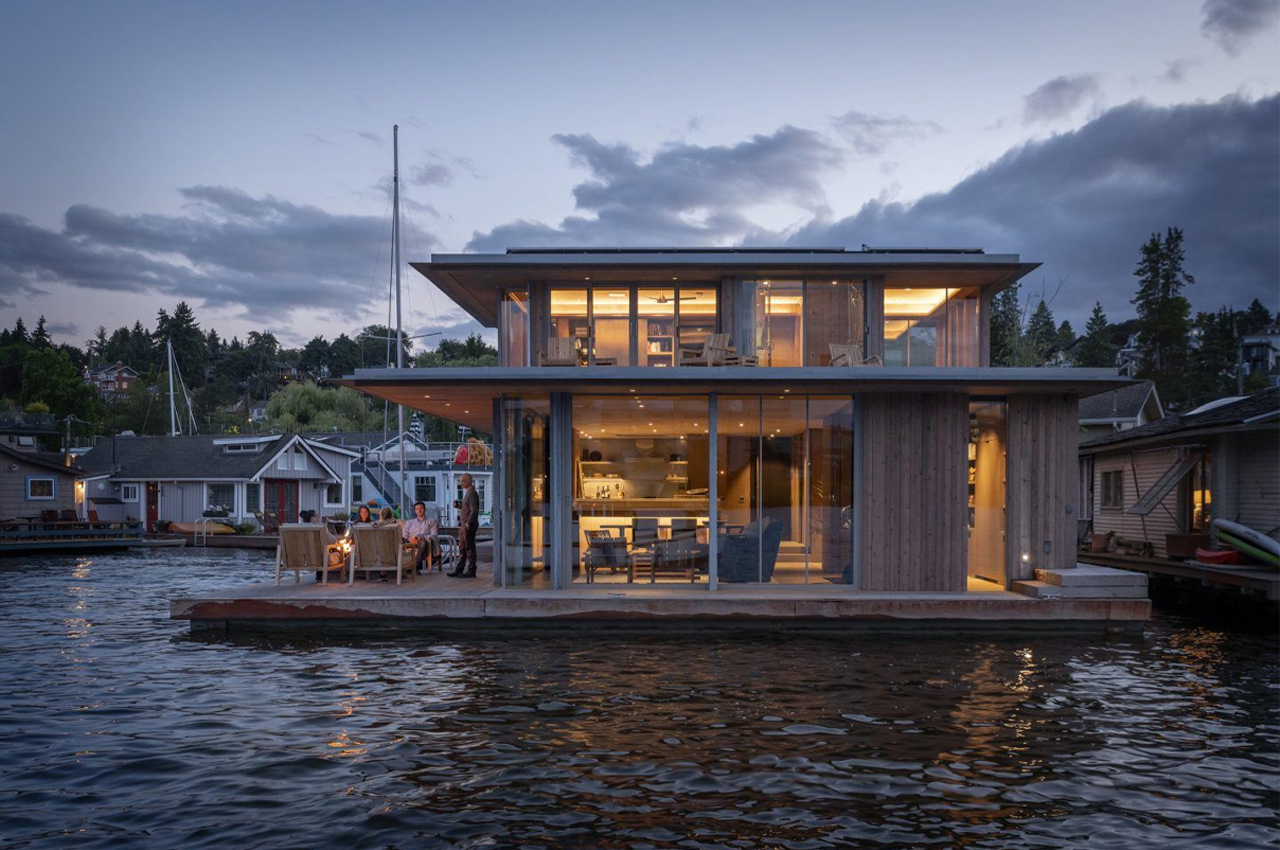
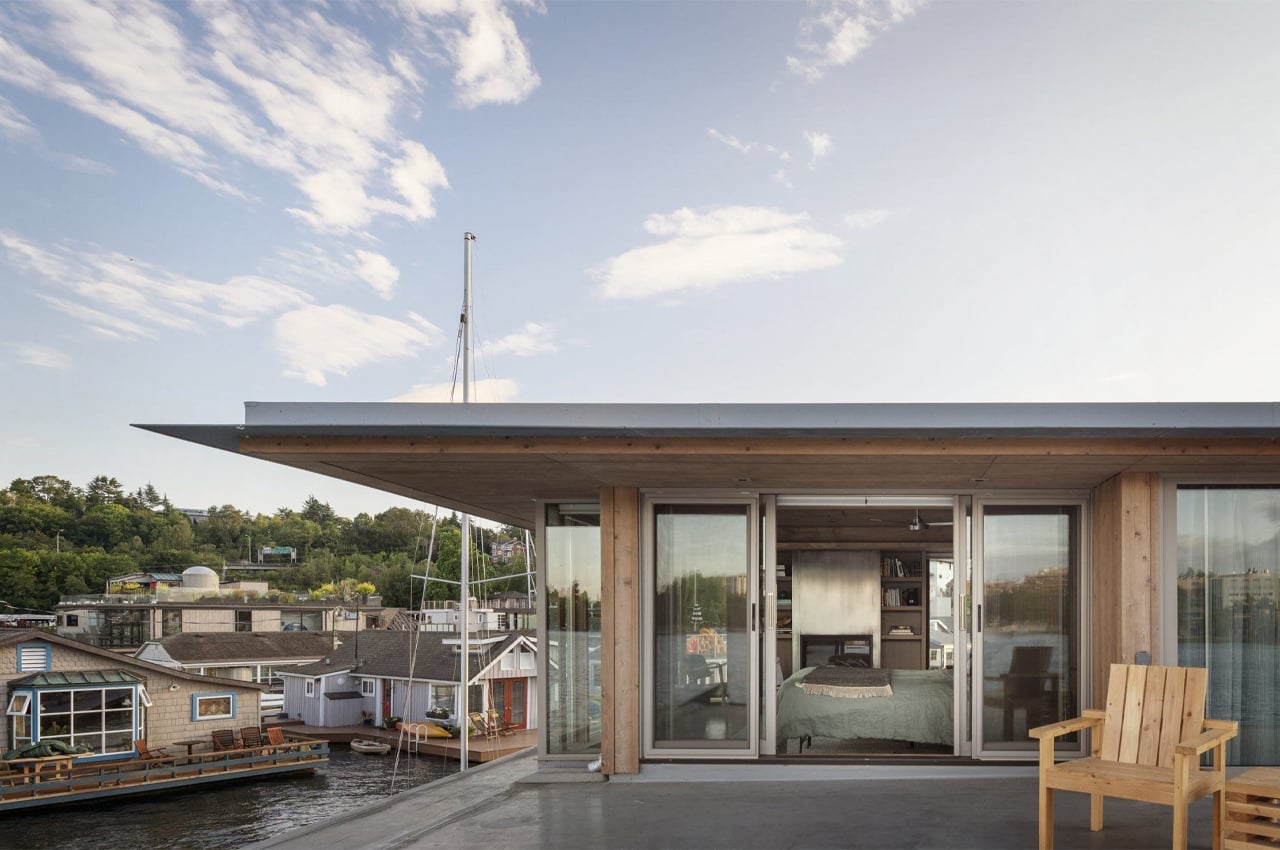
The Water Cabin is a floating home in Seattle’s Portage Bay that maintains the houseboat’s classic nautical personality and the weathered coziness of a cabin.
Why is it noteworthy?
Defined by a geometric silhouette that exhibits Kundig’s classic style, the Water Cabin’s frame is supported by galvanized steel structures that cradle spacious roof planes and wooden decks. Building the Water Cabin, Olson Kundig and their client hoped to blend interior and exterior spaces throughout the home. Arranged over two levels, the home’s interior spaces are specifically configured to maximize connections to the marine environment.
What we like
- Russian birch plywood ceilings line each room overhead, capturing the natural sunlight of the day and brightening the home
- Large roof overhangs protect the patio’s wood from seasonal elements
What we dislike
- Only a hidden murphy bed functions as the home’s guest room
6. Timber House


Combining nature and huge structures has not always been successful design-wise and carbon footprint-wise. But over the years, we’ve seen a lot of development in green architecture, and so we see buildings, condominiums, and other developments successfully incorporate environment-friendly aspects when creating these structures. An upcoming development in Toronto will be including some of these kinds of structures, including what may become the largest residential mass-timber buildings in Canada.
Why is it noteworthy?
Timber House will become part of the Quayside development on Toronto’s waterfront. The building, which will be long and narrow, will house affordable residential units as well as residences for senior citizens. What will make it stand out is that it will be a plant-covered building with the facade getting crisscrossed with narrow beams and incorporating patios in the structure to put up the greenery. Once completed, it will be one of the biggest mass-timber structures in Canada.
What we like
- It looks a bit like a Jenga tower but with greenery all around
- Quayside will also have a community care hub, recreation places for the community that will be living there
What we dislike
- No complaints!
7. Air Bee & Bee


Cutely called Air Bee & Bee (and listed on Air BnB), the house, or more specifically, the self-standing room, is located on an olive farm in a village called Grottole. The room fits two people, and the house itself has an exterior that looks like a honeycomb. But aside from just having a bee theme, there are actually nine apiaries or beehive boxes surrounding you. There is even one of those boxes hanging from the ceiling near your bed. So if you’re a bit scared of bees, then this is definitely not somewhere you should go to.
Why is it noteworthy?
You won’t get stung by bees though as these apiaries are netted. The beehive only houses the room where you can sleep or hang out in. To go to the bathroom, you have to go to a separate cottage nearby, where you have an outhouse and a private bathroom. The house has no electricity, but you’ll get solar-powered LED lights, a cooler bag so you can store your food, and you’ll have the sound of the bees to keep you company.
What we like
- The owner, who is also the beekeeper, will give you lessons about the importance of bees
- The goal, aside from having a cool Air BnB listing, is to spread more awareness about bees
What we dislike
- No complaints!
8. Koto Design x Adobu’s prefab home
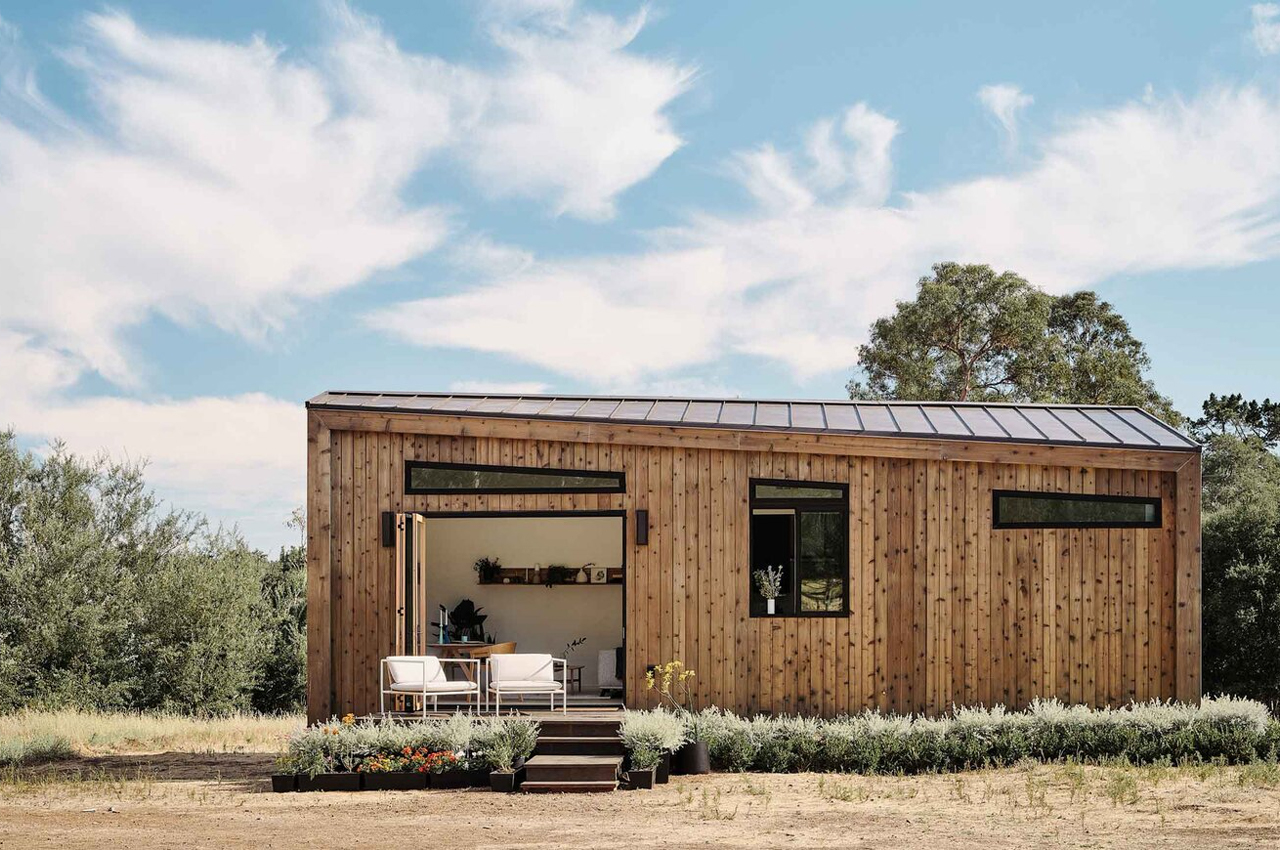

Based in the English seaside village of Westward Ho!, the architecture studio Koto Design captures the mellow vibe of a day spent at the seashore and translates it into a home space. Inspired by Scandinavian simplicity and Japanese minimalism, the result comes through breezy, open floor layouts and organic building materials.
Why is it noteworthy?
The architecture studio is known for its extensive catalog of sustainable, prefabricated tiny homes that can be transported to locations across the globe. In a recent collaboration with the USA-based, backyard home-building company Adobu, the two studios worked together to construct a tiny, prefabricated home that marries Scandinavian design with a Californian twist.
What we like
- Provides a semi-outdoor lifestyle
- Is carbon-neutral, and provides off-grid capabilities
What we dislike
- No complaints!
9. The Bookworm Cabin
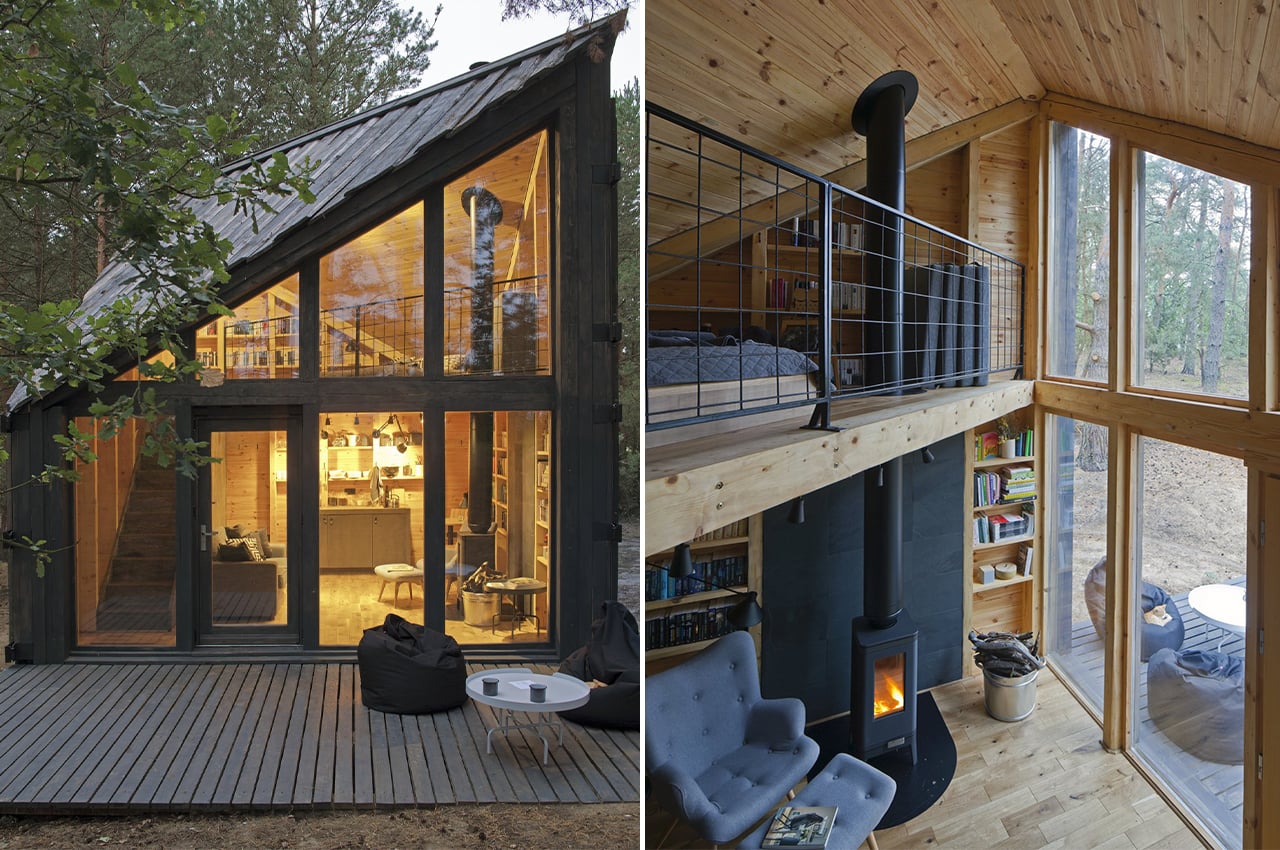

Libraries are one of my happy places so this cabin is straight out of my dream – a cozy personal library blended with a forest getaway! The Bookworm cabin is made for bibliophiles who want to enjoy the peace and quiet of nature while devouring stories by a fireplace. Designed by Polish duo Bartłomiej Kraciukand and Marta Puchalska-Kraciuk, this cabin is all about immersing yourself in your books and the woods which was their personal motive too!
Why is it noteworthy?
The angular 377-square-foot cabin is built on a wooded plot near the town of Mazovia which is just 31 miles outside Warsaw. The design and aesthetic were inspired by the surrounding lush forest and sand dunes.
What we like
- Heaven for book lovers
- Keeps the focus on your reading list or the scenic outdoors thanks to its sweeping glass windows
What we dislike
- Does not feature a fully equipped kitchen
10. Adraga
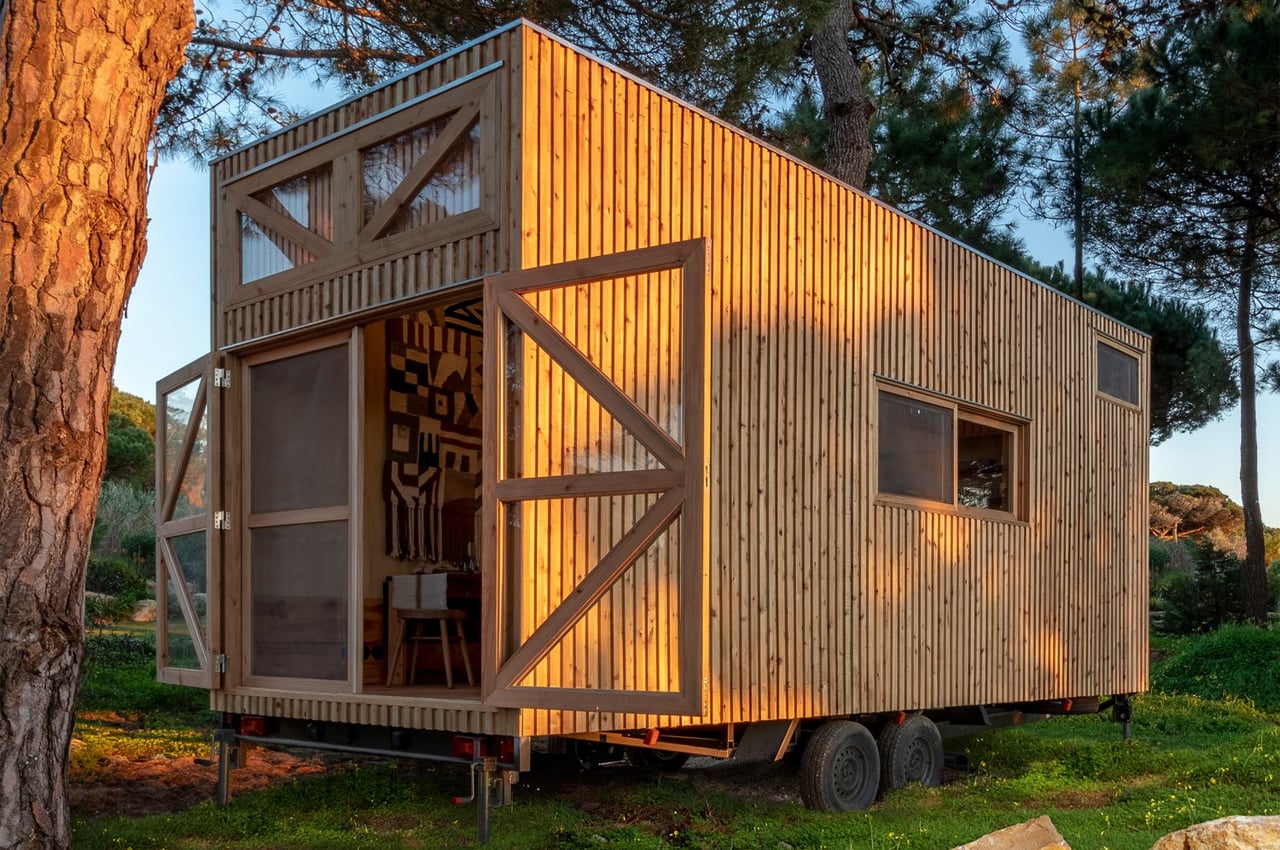

Called Adraga, the tiny home features an array of sustainability elements including solar panels, rainwater collection, and composting garden beds. As part of a larger series of tiny home one wheels, Adraga is home to a retired couple who just want to disconnect from the busyness of the world.
Why is it noteworthy?
Looking at Adraga from the outside, its unstained pinewood facades invoke simplicity. Defined by a rectangular, flat-roofed silhouette, the team at Madeiguincho found movement through windows and doors. On one end of the tiny home, a single, farmhouse-style door welcomes residents into the home’s subdued bathroom. There, against the soothing backdrop of walnut wood panels, residents can enjoy a semi-outdoor shower atop wooden floor slats.
What we like
- The layout of Adraga is designed to optimize the available floor space
- Incorporated with various off-grid elements
What we dislike
- In the bathroom, a dry toilet operates without flush water and closes the waste loop – but not everyone may be comfortable with using it
The post Top 10 wooden homes that are the warm + zen living space you need first appeared on Yanko Design.
from Yanko Design

0 Comments